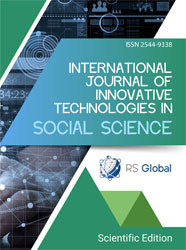INTERNATIONAL LEGAL DOCUMENTS IN THE SPHERE OF ENSURING PEACE AND SECURITY IN THE DIGITAL AGE: CLASSIFICATION AND DEVELOPMENT TRENDS
Abstract
This article is devoted to the review and analysis of international legal documents in the field of ensuring international security, adopted taking into account the development of digital technologies. The author emphasizes that the rapid development of digital technologies has become an important factor determining the state of international security. The article provides the author's classification of international legal acts in the field of international security in the context of global digital transformation. Thus, the author distinguishes three groups of documents: 1) international legal acts adopted within the framework of international security law and international information law regarding information security/cybersecurity; 2) international legal acts adopted within the framework of international criminal law against cybercrime and cyberterrorism; 3) international legal acts adopted within the framework of international humanitarian law/law of armed conflict against cyber warfare and rules of warfare in cyberspace. At the same time, most of the adopted documents are non-binding, which indicates the absence of a universally recognized international consensus on issues of ensuring international security. This is due to the fact that the issue of the legal status of cyberspace has not yet been settled in international law. The article notes the role of regional organizations in developing international standards in the field of ensuring international security, especially such as the Council of Europe and the SCO. The article also touches upon issues of the prospects for developing rules for conducting cyber warfare and recognizing the legal personality of combat robots.
Views:
675
Downloads:
101
Copyright (c) 2024 Khamdamova Firuza Urazalievna

This work is licensed under a Creative Commons Attribution 4.0 International License.
All articles are published in open-access and licensed under a Creative Commons Attribution 4.0 International License (CC BY 4.0). Hence, authors retain copyright to the content of the articles.
CC BY 4.0 License allows content to be copied, adapted, displayed, distributed, re-published or otherwise re-used for any purpose including for adaptation and commercial use provided the content is attributed.











